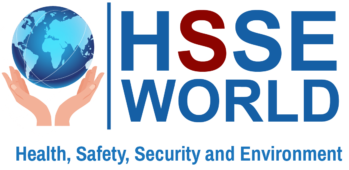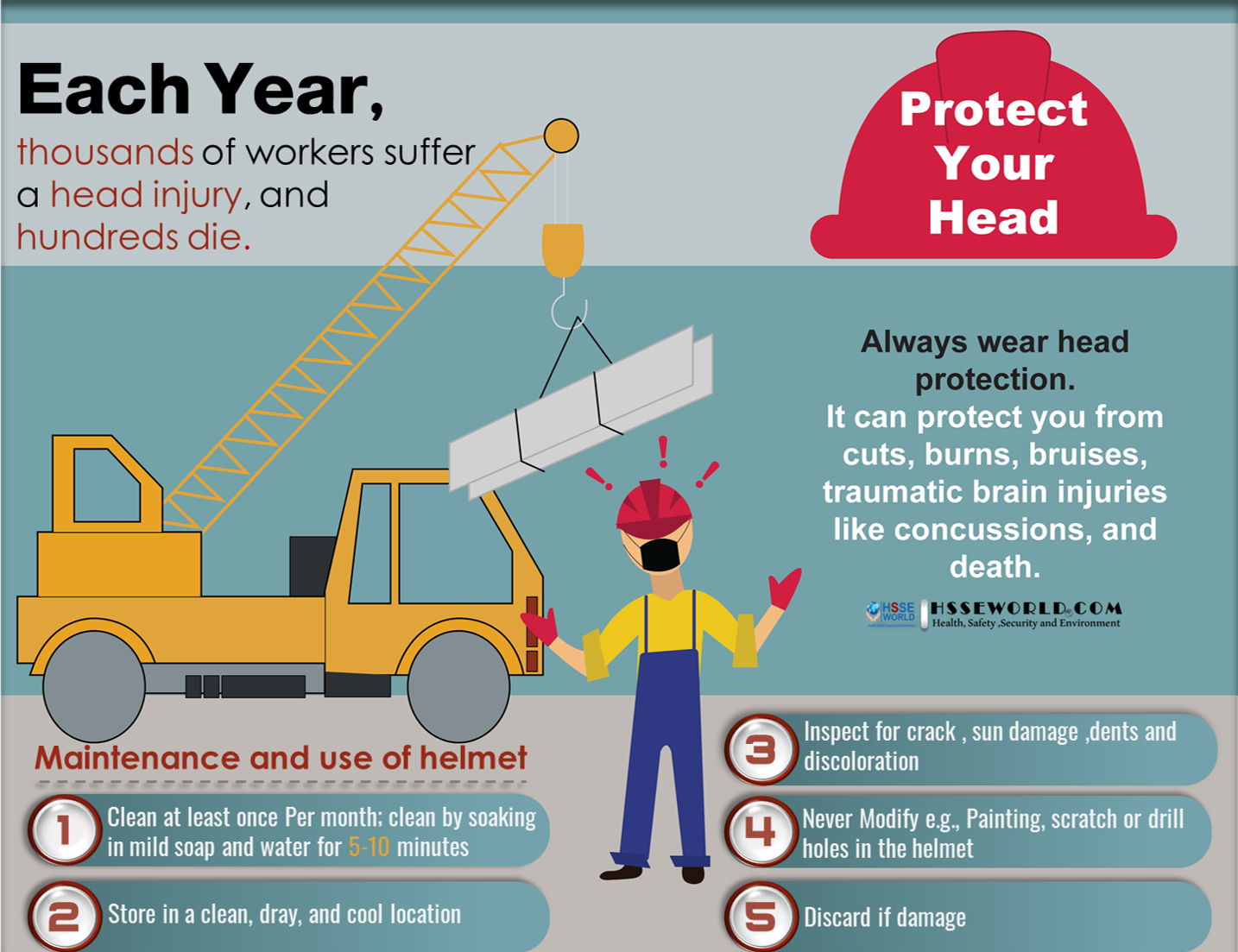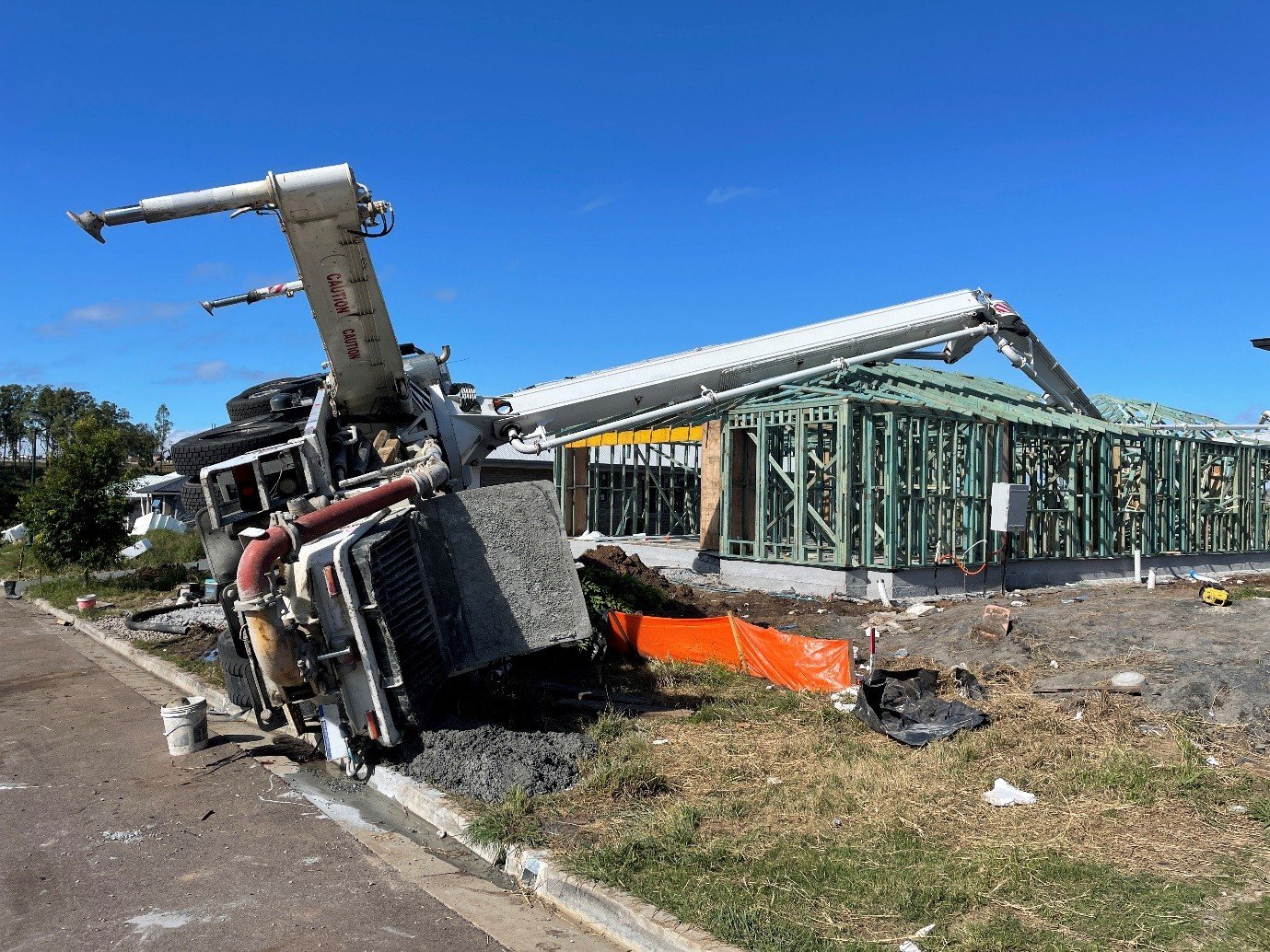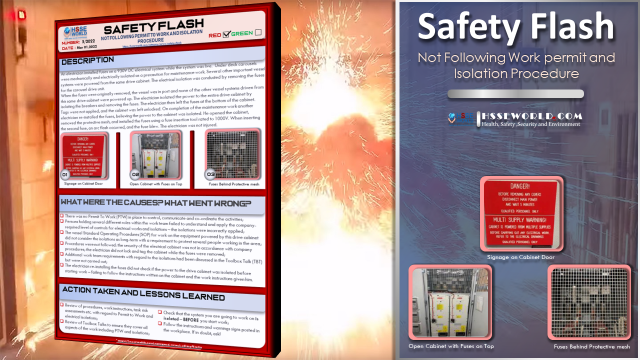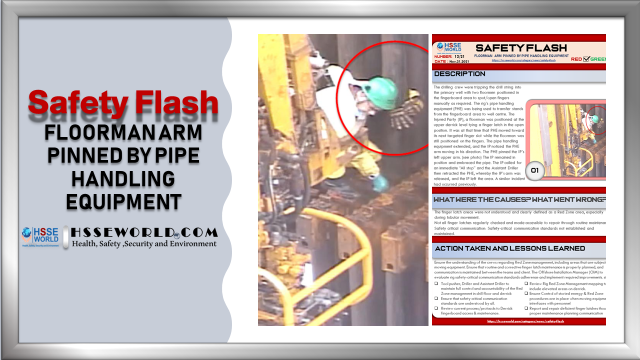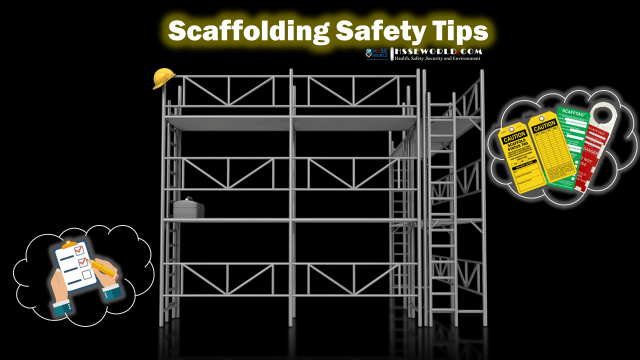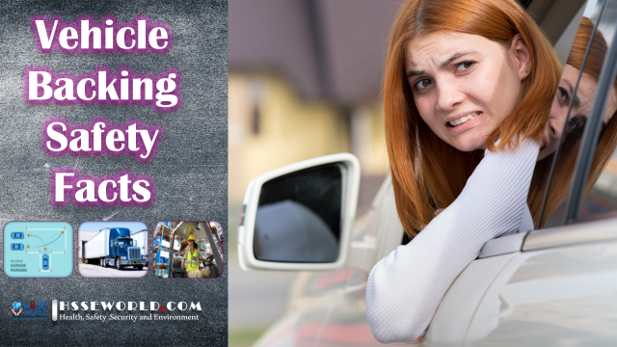Photo of the day: 10 Elements of Successful Behavior-Based Safety Program
More and more we need to look at new approaches to achieving safe and healthy workplaces. We need to apply the learning from the many years of analyses of accidents and ill health because this will contribute to future prevention strategies and activities.
Behaviour Based Safety (BBS) is an approach that we believe can be applied successfully; it is gaining more interest across industry sectors globally and has the great advantage of needing the involvement of the individual employee, in addition of course, to employer commitment.
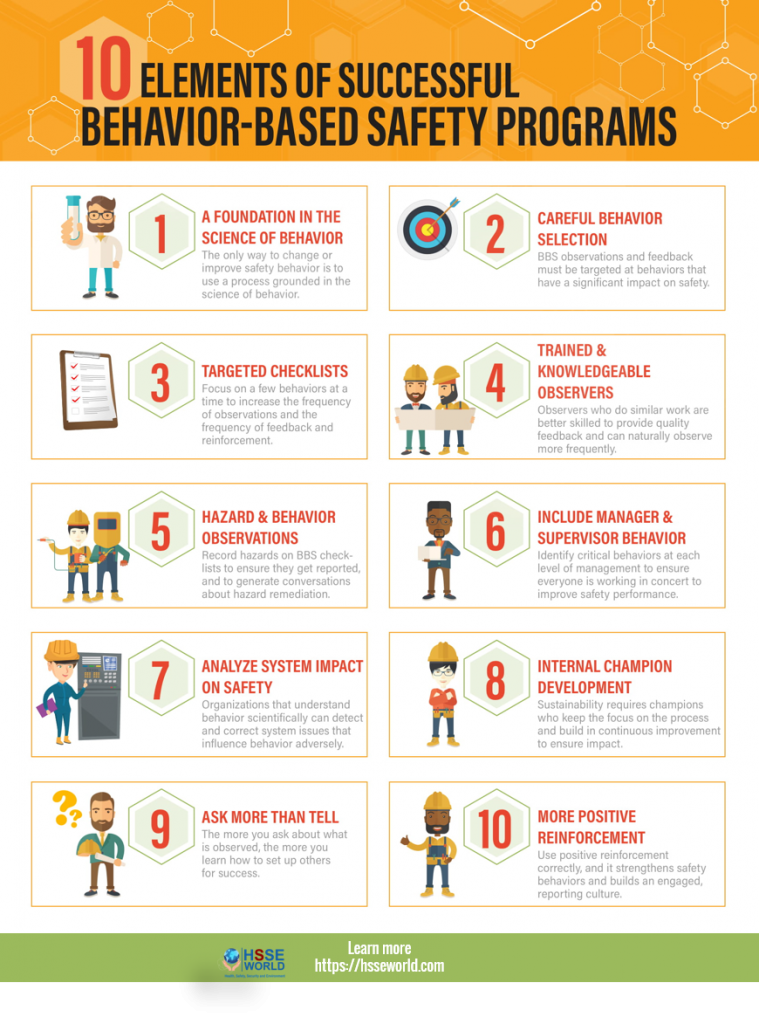
How often have we experienced situations in which an employee’s competence in a work process is assessed at the point that they leave the training room with the assumption that, once learned, the process will be applied correctly and safely? This fails to take account of the many factors that influence and reinforce learning and behaviors. BBS addresses these factors. It is closely linked to company culture and values and, most importantly, when it works, it is an excellent tool to improve safety performance in the workplace.
Various approaches have had reasonable success in reducing unsafe behaviors in the workplace. Some involve penalties; others involve surveillance; others involve guidance, codes, and procedures to follow; others still are supportive and training-oriented. Some initiatives come from the employer, from the social partner organizations, from state regulatory bodies, and some worthwhile initiatives, come from individual employees’ own insights, ideas, training, and development activities around health and safety.
Most employers and employees in the area of safety will agree that the ultimate aim of a safety initiative is a “total safety culture”; however, this concept is rarely defined. Total safety culture is a culture in which:
a) individuals hold safety as a ‘value’ and not just a priority;
b) individuals take responsibility for the safety of their co-workers in addition to themselves; and
c) all level of the employee is willing and able to act on their sense of responsibility they can go ‘beyond the call of duty’ (Perdue, 2000).
The following are some requirements for any approach to safety at work that brings about noticeable, lasting results and contributes to total safety culture:
- A strong management commitment towards maintaining and improving behavioral safety witnessed in the regular acts of individuals at the management level.
- Respectful, trusting, open communication between management and employee groups about all aspects of safety in the workplace.
- An open, feedback-rich culture among employees, which enables employees to consistently learn and grow.
- A commitment to improving the profile of and attitude to health and safety, and increased employee engagement in safety.
- An emphasis on safe and unsafe behavior; not a sole dependence on lagging indicators such as safety statistics.
- A strong, consistent, timely reaction to the discovery of unsafe acts, whether they result in injury or not. Safety incidents are viewed as an opportunity to learn and improve.
- Generally transparent and fair leadership from all, including managers, supervisors, and owners.
- Awareness amongst all staff of different ways to consider or query human factors – how we do what we do, and why.
This blog is informed by the field of Behaviour- Based Safety (BBS), which is often described as a bottom-up approach (frontline employees),
with top-down support from safety leaders.
A behavior-based safety approach promotes interventions that are people-focused and often incorporate one-to-one or group observations of employees performing routine work tasks, setting goals carefully, and giving timely feedback on safety-related behavior, coaching, and mentoring.
The initiatives have a proactive focus, encouraging individuals and their workgroups to consider the potential for incident involvement, (accidents) and to assess their own behavior as safe or unsafe always, no matter what.
A BBS approach is one which:
- Is based on solid principles about engaging, motivating, assisting, reinforcing, and sustaining safe behaviors.
- Takes a systematic approach, examining the motivation underlying behaviors, in order to increase safe behavior.
- Is an ongoing effort; not ‘once-off’ provisions, but a new way of working that the safety leader must continually promote sustainable, positive results.
- Takes time to achieve; however, results can be observed immediately due to the nature of the measurement involved.
- Emphasizes increasing safe behaviors rather than focusing on the length of time without injury. BBS programs do not depend solely on ‘lagging indicators’ (after the fact), and instead shift the focus to ‘leading indicators’ (preventative).
- Is not a substitute for an already existing comprehensive health and safety program; it is a supplementary tool that will enhance the effect of already existing practices and will allow for an objective measurement system.
- Aims to understand the causes of incidents and near misses and correct them through the behavior of relevant people. For example, reducing hazards often requires behavior change of managers and frontline workers, and equipment redesign involves behavior change of engineers.
“BBS is about everyone’s behavior, not just the frontline”
(Agnew & Ashworth, 2012)
BBS stems from the field of organizational behavior analysis. The focus in both organizational behavior analysis and BBS is behavior. The overarching theme in behavior analysis and BBS is that behavior is maintained by what occurs after it (consequences).
Many safety interventions in work settings focus on antecedents or events that come before the behavior that may evoke behavior. For example, many work settings rely heavily on training, safety signs, pep talks, toolbox talks, or pre-briefs. These can be effective in activating behaviors initially, but it is what occurs after our behavior that ensures the behavior will occur time and time again.
For example, a Toolbox Talk addressing correct manual handling techniques might result in correct techniques on the day of the talk; however, over time employees will revert to old practices. This is because nothing has occurred after their correct behavior to indicate that it is correct, or that it has benefitted the individual or the organization to be so safety-conscious.
Within BBS, the behavior is explained in terms of the ABC model (Antecedent, Behaviour, Consequence).
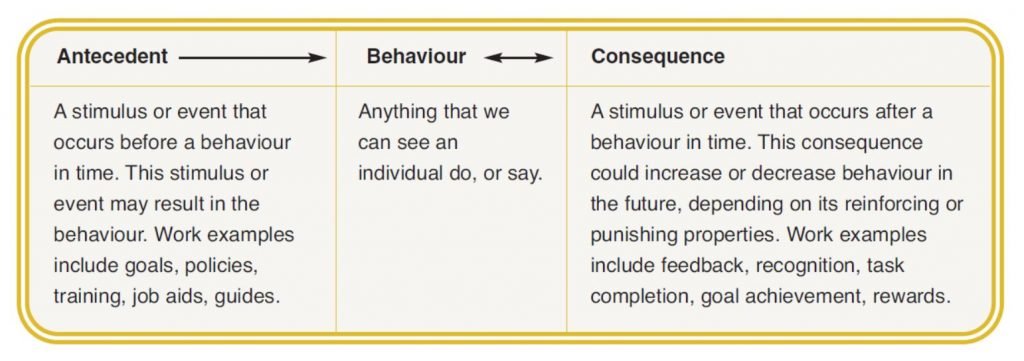
the greatest influence on behaviour.
When we examine an incident report and ask questions about why a person behaved in a certain way, we tend to look at antecedents, or what occurred to ‘set off’ the behavior. However, if we examine the report with a view to consequences, we will gain a clearer picture of why the behavior occurred. For example, if an eye injury occurred and the individual was not wearing PPE, we need to examine what were the consequences of wearing the PPE (e.g., possible but not a definite reduction of injury) and what were the consequences for not wearing PPE (e.g., immediate comfort, better vision on the job).
- Examination of consequences can reveal that in some instances it is actually more preferable to not wear safety equipment. It is the job of a safety leader to ensure that it is more preferable to engage in safe behavior.
Download the photo
More photos:
- Photo of the day: Identify the Hazards
- Photo of the day: Hand safety Facts
- Photo of the day: What are the hazards
- Photo of the day: Outline Safety observations
- Photo of the day: Safety Leader
- Photo of the day: Unsafe Conditions
- Photo of the day: Why is PPE important?
- Photo of the day: DO’S and DON’TS of Working At Heights
- Photo of the day: 5 Tips to keep your Crew Healthy and safe at work
- Photo of the day: Tracking Near Miss Incidents
- Photo of the day: 10 Elements of Successful Behavior-Based Safety Program
- Photo of the day:5-Signs your Near-Miss Reporting is failing
- Photo of the day:7 Ineffective Safety Practices (And What To Do Instead)
- Photo of the day:5 keys for effective Self-Management in lone worker safety
- Photo of the day: FrontLine supervisors are the LINCHPINS of safety
- Photo of the day: Fostering Engagement at the front line
- Photo of the day: workplace Hazards
- Photo of the day: What is the line of fire
- Photo of the day: How to Avoid the Fatal Four
- Photo of the day: Fire Safety checklist for workplace
- Photo of the day: Most common safety incidents in the workplace
- Photo of the day: Fire Emergency
- Photo of the day: Ladder Safety Tips
- Photo of the day: 8 Basic steps to wear a safety harness
- Photo of the day: You can prevent workplace Falls
- Photo of the day: Top10 Injuries in office work
- Photo of the day: Overhead powerline safety
- Photo of the day: Eyes on the Road The challenges of safe driving
- Photo of the day: 5 Ways to Reinforce Commuting With Positive Reinforcement
- Photo of the day: Safe Lifting at work
- Photo of the day: 5 Essential outcomes of an effective leadership survey process
- Photo of the day: Conveyors Safety Tips
- Photo of the day: Confined Space rescue
- Photo of the day: Construction Site fire Safety
- Photo of the day: Chemical Spill Emergency Response
- Photo of the day: Electric shock survival
- Breath Safely: The Proper Use of Respiratory Protection
- Photo of the day: Confined space safety Precautions
- Photo of the day: Choosing the Right Face Mask and the difference between a respirator and face mask
- Photo of the day: Importance of Mock drill and Fire Action Emergency Procedure
- H2S Gas and how to handle its Emergency
- Your steps to chemical safety
- Photo of the day: hierarchy of controls
- Photo of the day: Tips to reduce Heat stress in the workplace
- Photo of the day: Safety Equipment for Confined Spaces
- Photo of the day: Dangerous Goods Classes
- Photo of the day: Trenching Safety Tips That Can Save a Life
- Photo of the day: Mental health in the workplace
- Photo of the day: Emergency preparedness in the workplace
- Photo of the day: musculoskeletal disorders
- Photo of the day: Workplace Inspection
- Photo of the day: New worker Orientation & Safety Orientation checklist
- Photo of the day: Effective Health and Safety Committees
- Photo of the day: 10 Scaffold Safety Essentials
- Photo of the day: Incident Investigations
- Photo of the day: Preventing the spread of contagious illness
- Photo of the day: 5 ways to reduce the risk of Slipping and Tripping
- Photo of the day: Sitting at work
- How to use Plate Clamps Safely: Safety Moment#34
- Photo of the day: working in heat and Humidex Rating
- Photo of the day: Don’t be Driven to Distraction
- Photo of the day: Fatigue at Work
- Photo of the day: Noise in the affected workplace
- Photo of the day: Indoor Air Quality
- Photo of the day: WHMIS 2015 – Pictograms
- Photo of the day: Personal Protective Equipment last resort
- Photo of the day: Manual Material handling
- Photo of the day: Controlling COVID-19 in the Workplace-Physical Barriers
- Photo of the day: Generator Safety
- Photo of the day: Position for safety and comfort-Safety Tips
- Photo of the day: Cannabis and Impairment in the Workplace
- Photo of the day: sun safety in the workplace
- Photo of the day: Top FIVE Heavy Equipment Construction Site Safety Tips
- Photo of the day: Work-Related Asthma
- Photo of the day: choosing the right Anchorage
- Photo of the day: Protect your Head
- Photo of the day: Extension Cord Safety Tips
- Photo of the day: Concrete Truck Driver Hand Signals
- Photo of the day: Safe use of ladders and step ladders
- Photo of the day: Arc-Fault Circuit Interrupters (AFCI)
- Photo of the day: HSE Bulletin Board
- Photo of the day: Scissor Lift Safety
- Photo of the day: Managing Risks of Exposure to Solvents in the workplace
- Photo of the day: Flagman and Traffic control
- Photo of the day: Run Project safely with Crane Hand Signals
- Photo of the day: Read All Labels Work safe
- Photo of the day: Flood Safety Tips
- Photo of the day: Fall Protection Plans
- Photo of the day: Lockout and Tagout Safety
- Photo of the day: Types of Hand Protection
- Photo of the day: Types of Foot Protection
- Photo of the day: Floor Marking
- Photo of the day: Overhead Power lines Clearance
